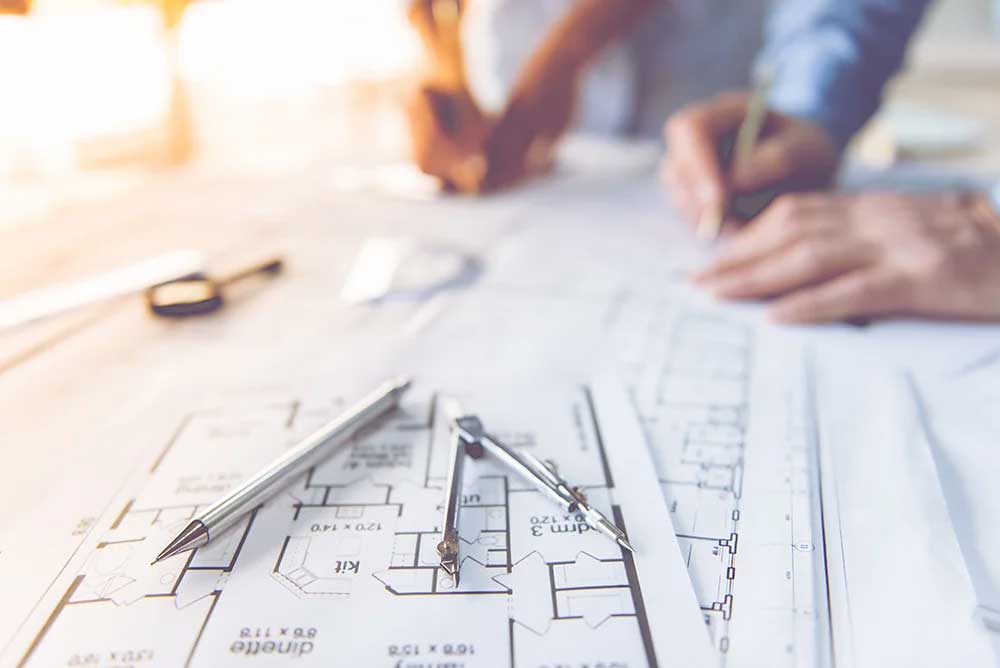This bundle of classes contains all the units an architect needs to complete continuing education requirements in Florida. The topics are interesting, timely and practical.


Mandatory Classes
This course delves into the complexities of advanced building codes and regulations. Gain valuable insights into the latest updates and revisions, ensuring your projects comply with the most current industry standards.
View ClassIndividual Classes: Choose the classes you need to renew your license.
This class examines the parameters involved in selecting various construction components from the ground and extending to the first completed floor. It is important that these choices are well thought out because the top of this assembly is the foundation for the remaining construction.
View ClassRisk refers to the chance of experiencing harm or loss. Despite how carefully an architect conducts their business and makes informed decisions regarding clients and projects, the element of risk is always present. This class provides essential guidelines for those who would like to reduce the risk inherent in their professions.
View ClassThis course delves into the complexities of advanced building codes and regulations. Gain valuable insights into the latest updates and revisions, ensuring your projects comply with the most current industry standards.
View ClassDive into the future of sustainable power in Alternative Energy. Explore the diverse world of renewable resources from solar and wind to geothermal and hydroelectric energy.
View ClassCommunicating with Seniors provides insights and techniques to facilitate communications with those who are in their senior years.
View ClassThis class explores materials and techniques employed to create protective barriers that prevent deadly falls. It examines the regulations governing the effectiveness of railings because safety is the foremost reason behind those regulations. The diverse aesthetic possibilities made possible with the integration of technology are included. Hurdles encountered by design firms when selecting, designing, and specifying these crucial architectural elements are addressed.
View ClassConstruction Conflict Resolution addresses the disagreements that are bound to arise whenever substantial amounts of money are involved. The number of and severity of conflicts during a construction project can be reduced by implementing preventive measures and carefully attending to details and procedures. Such precautions can assist the architect in effectively managing and resolving issues.
View ClassDive into the world of resilience with Critical Facilities: Hazardous High Winds. This specialized course equips professionals with vital knowledge to safeguard critical facilities against the fury of high winds and severe weather events.
View ClassThis class provides a concise analysis of the design and construction techniques used in creating systems that can withstand water penetration. Gaining an understanding of these systems allows us to identify potential sources of intrusion and determine the most effective approach to repairing them and minimizing further harm.
View ClassRadon is invisible, odorless, tasteless, capable of being dissolved in water, and can pose significant dangers. Radon usually remains unnoticed. No one can develop immunity to radon. Investigate this abundant and constantly present gas that possesses radioactivity. Delve into the reasons behind its increasing accumulation within our structures, the significant health hazards it poses to occupants, and most importantly, the precise measures we can undertake to mitigate escalating risks associated with it.
View ClassExplore electric power delivery through underground installation technology, including safety issues, and environmental considerations of burying power lines. Explore how to ensure reliable electricity supply with minimal visual impact.
View ClassExplore the impact of Endangered Species on Land Development Projects. Discover the complex interplay between environmental conservation and urban development including the regulatory landscape. This class offers insights into sustainable practices, compliance strategies, and responsible land use. Gain crucial knowledge for balancing progress and preserving biodiversity in your development initiatives.
View ClassDive into the world of Energy Codes and Standards for Architecture excellence.
View ClassInvestigate resilient engineering with floodproofing strategies in engineering. Learn how to safeguard structures against floods, mitigate risks, and ensure resilience including floodproofing techniques, regulations, and innovative solutions.
View ClassThis bundle of classes contains all the units a Florida Architect and Interior Designer needs to complete continuing education requirements in Florida. The topics are interesting, timely and practical.
View ClassThis class will provide criteria useful to determine the best choice for responding to older buildings. Choices will be weighed in terms of value for the owner, the buyer, and the community where the building is situated. Additionally, we will briefly explore a potential opportunity for collaboration between architects and commercial real estate agents.
View ClassThis class addresses the principles and methods of dealing with moisture resistance in a methodical manner, addressing one building system at a time. Delve into the fundamentals which encompass the underlying principles of water behavior and the various pathways it utilizes when it infiltrates buildings. A comprehensive understanding of how destruction initiates and intensifies serves as the driving force behind established design principles and material choices intended to halt that undesirable migration. Examine the practical solutions, examining them in great detail.
View ClassThis class addresses the issues that elders face when experiencing physical and/or mental decline. Some may find it increasingly difficult to continue using their own homes. Thanks to extensive research on accessible environments for those with disabilities, we can build new buildings that are far more accommodating for the elderly. Even in existing homes, modifications can be made gradually and as needed, just not as easily or efficiently as starting from a blank slate.
View ClassGain the knowledge and skills to safeguard a home with this class that presents the engineering components of Residential Storm Shelters.
View ClassDive into the complex realm of seismic soil-structure interaction (SSI) and earthquakes with this comprehensive course. Explore the intricate dynamics between soil, structures, and seismic forces, gaining deep insights into the behavior of foundations during earthquakes.
View ClassIt is easy to begin visualizing the kind of building that could potentially meet a client’s requirements, perhaps even going so far as to speculate about its outward appearance. This class addresses the critical elements that must be addressed before the client makes a final decision.
View ClassThis class offers a set of criteria that can be used in assessing the most advantageous options for building reuse. These will help ascertain which course of action provides the best value to the owner, buyer, and the local community where the structure is situated. Any reuse of older buildings is better than not reusing them at all for all parties involved.
View ClassSustainable and Eco-friendly Building Materials explores cutting-edge solutions, eco-conscious designs, and environmentally responsible construction practices. Learn about renewable resources, recycled materials, and innovative technologies transforming the building industry.
View ClassDive into the crucial field of Terrorism Mitigation Against Buildings. Our specialized course equips engineers with essential information to design and fortify structures against potential terrorist threats.
View ClassRevisions and updates have been made to the National Electrical Code (NEC) from 2017 to 2023.
View ClassThis class takes an in-depth look at the considerations and options when choosing materials to cover outdoor areas. It provides the tools to evaluate different coating options and presents new technologies that are coming into use.
View ClassDiscover the foundational principles of construction through the art of Underpinning Techniques and their versatile applications. Explore the foundations of structural support, construction stability, and architectural innovation with expert insights in this comprehensive guide.
View ClassExplore the phenomenon of cities experiencing higher temperatures than their rural surroundings due to human activities and modifications.